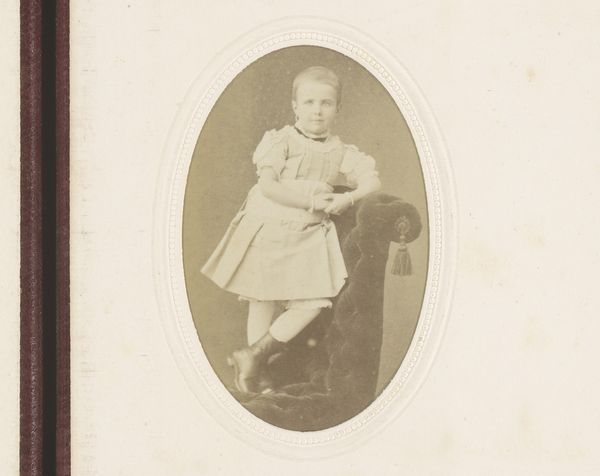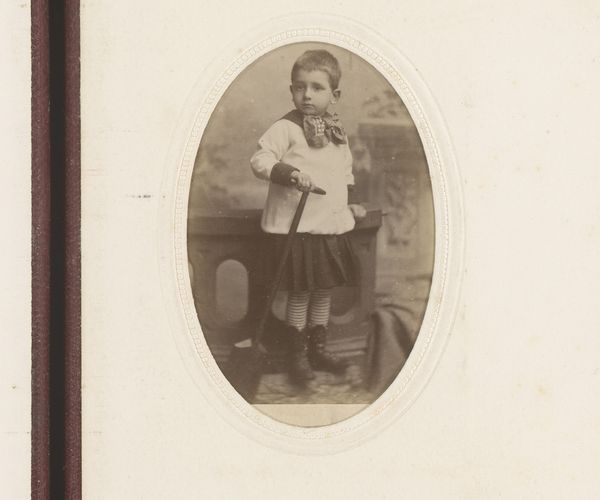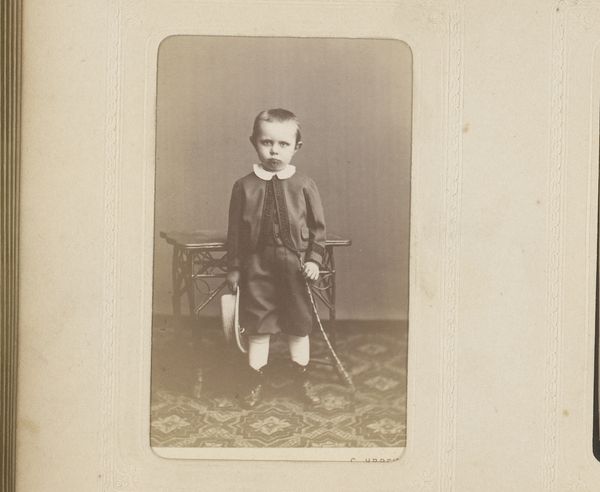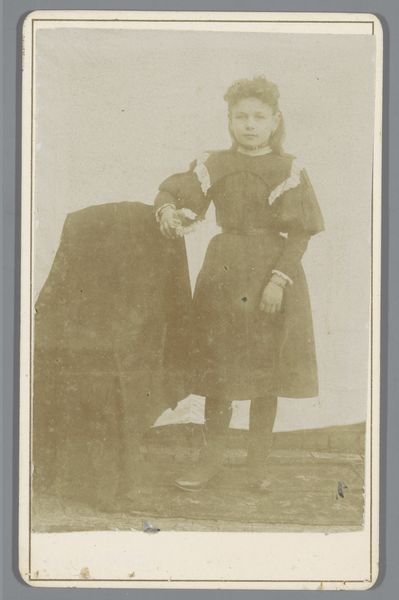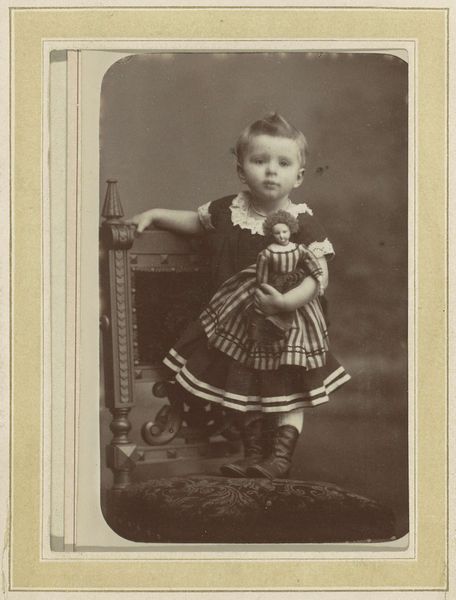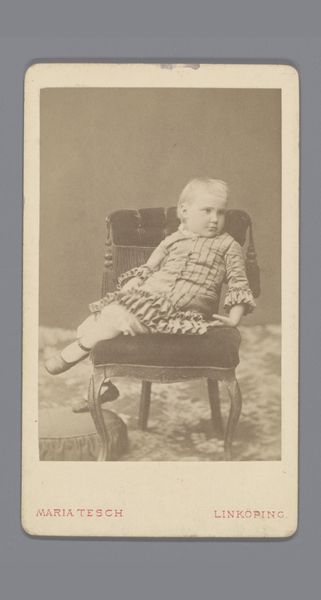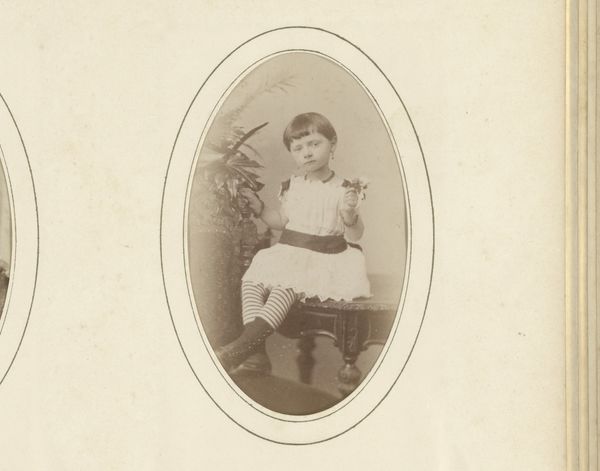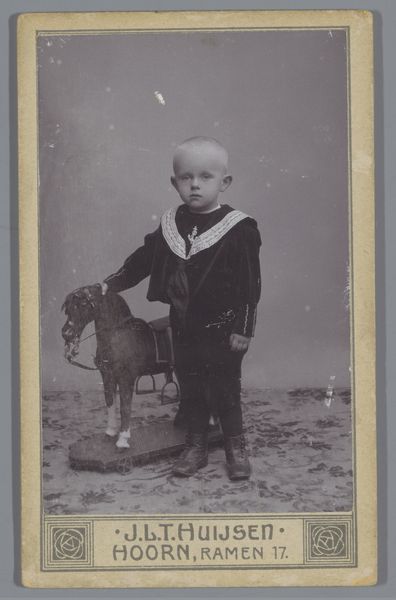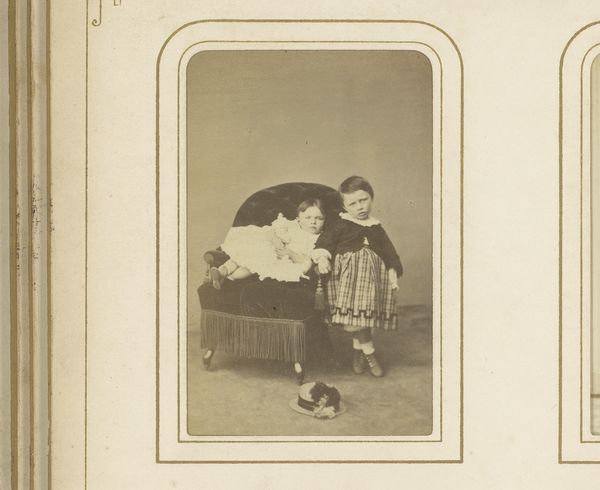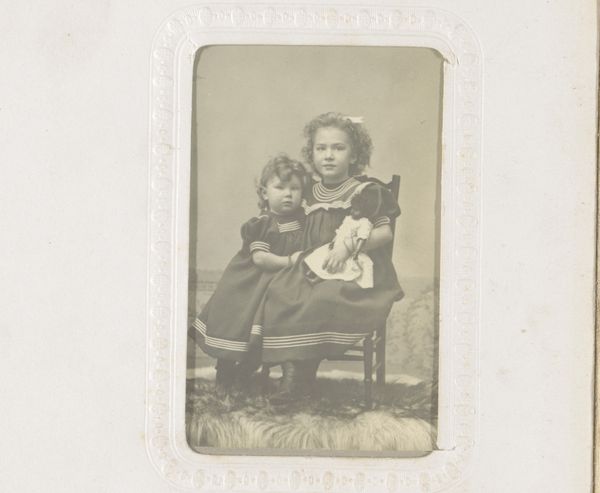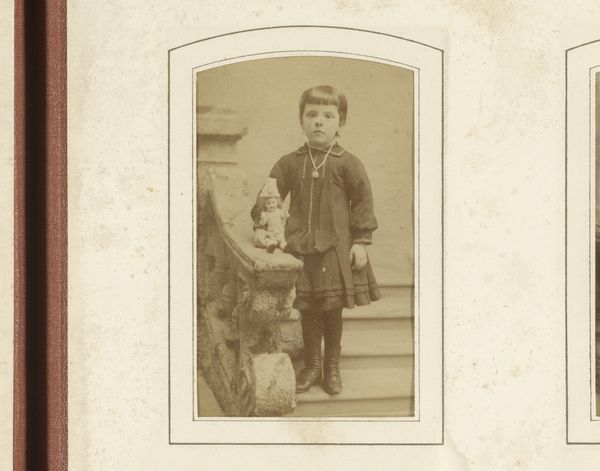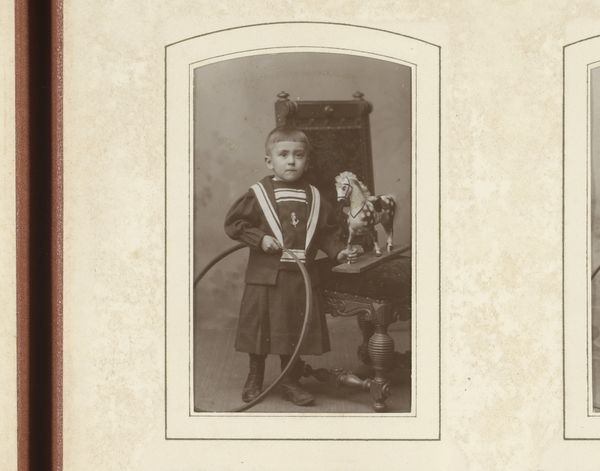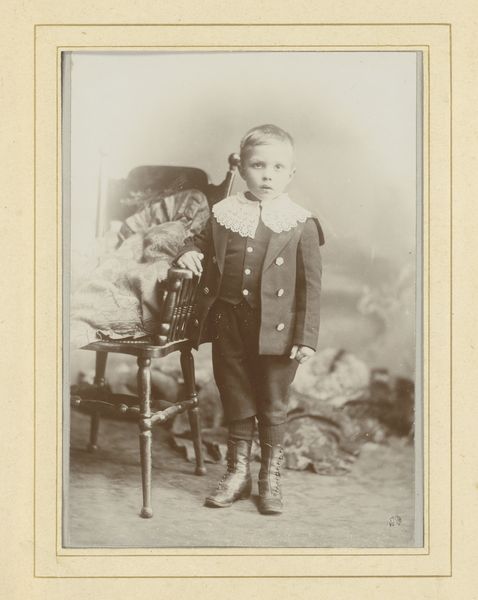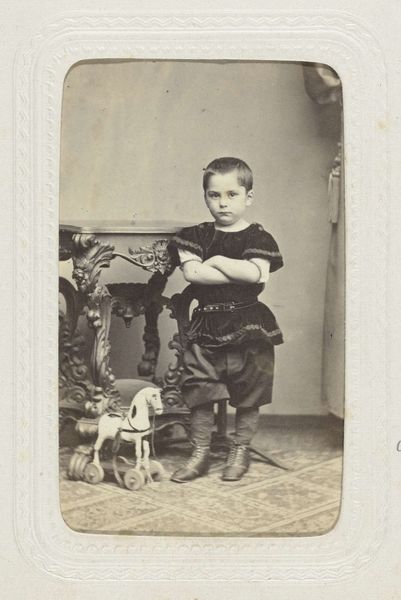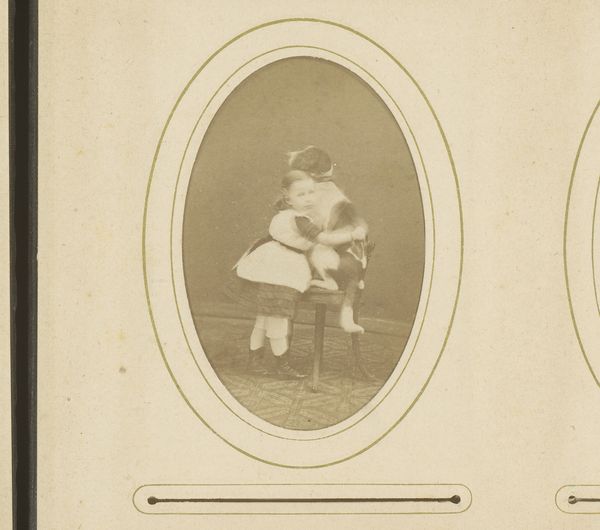
photography
#
portrait
#
photography
#
genre-painting
Dimensions: height 163 mm, width 105 mm
Copyright: Rijks Museum: Open Domain
Curator: Here we have a fascinating photograph from the early 20th century, sometime between 1900 and 1915, attributed to Wilhelm Holtorp. The title translates to “Portrait of an Unknown Child with Rocking Horse.” Editor: It's striking how somber the scene is. Even for a period portrait, there's a profound sense of stillness, almost melancholia. The child looks quite serious. Curator: Yes, but look closer at the symbols. The rocking horse itself, typically associated with childhood joy, could also represent a child's ambitions and journey into the world. It suggests innocence on the cusp of experience. Editor: Interesting, I'm more struck by the socio-economic context. That outfit! The elaborate collar, the miniature belt, the detailing... clearly this child comes from a family of some means. This staged portrait speaks volumes about bourgeois aspirations at the turn of the century. Curator: Indeed. And the very act of commissioning a photographic portrait signifies a desire to preserve and present a certain image of the family and of course its legacy for prosperity. Editor: It also plays into a wider cultural narrative around childhood at the time, a movement towards recognizing the special place of children within society. These images played an important role in cementing notions of family. Curator: Certainly, these kind of artifacts are never just what they seem. And what appear, at first glance to be just portraits of well off children in all innocence and nicety. In truth represent the visual language for how childhood was perceived at the time. Editor: Holtorp’s lens allows us a glimpse into those historical dynamics and the social strata operating around photography at that point. A subtle memento mori—how social standings change and the fleeting nature of existence in contrast. Curator: Yes, ultimately, this simple photograph provides a unique portal to our collective cultural memory, prompting us to think on how visual mediums have played a critical role in the shaping of perception and its projection as cultural memory. Editor: Exactly, seeing it now with those ideas considered, provides a valuable exercise on historic societal structures and the cultural symbols of prosperity back in the time the shot was taken.
Comments
No comments
Be the first to comment and join the conversation on the ultimate creative platform.
